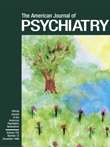Comorbidity and Course of Psychiatric Disorders in a Community Sample of Former Prisoners of War
Abstract
Objective:The authors assessed DSM-III-R disorders among American former prisoners of war. Comorbidity, time of onset, and the relationship of trauma severity to complicated versus uncomplicated posttraumatic stress disorder (PTSD) were examined. Method:A community sample (N=262) of men exposed to combat and imprisonment was assessed by clinicians using the Structured Clinical Interview for DSM-III-R.Results:The rates of comorbidity among the men with PTSD were lower than rates from community samples assessed by lay interviewers. Over one-third of the cases of lifetime PTSD were uncomplicated by another axis I disorder; over one-half of the cases of current PTSD were uncomplicated. PTSD almost always emerged soon after exposure to trauma. Lifetime PTSD was associated with increased risk of lifetime panic disorder, major depression, alcohol abuse/dependence, and social phobia. Current PTSD was associated with increased risk of current panic disorder, dysthymia, social phobia, major depression, and generalized anxiety disorder. Relative to PTSD, the onset of the comorbid disorders was as follows: major depression, predominantly secondary; alcohol abuse/dependence and agoraphobia, predominantly concurrent (same year); social phobia, equal proportions primary and concurrent; and panic disorder, equal proportions concurrent and secondary. Trauma exposure was comparable in the subjects with complicated and uncomplicated PTSD.Conclusions:The types of comorbid diagnoses and their patterns of onset were comparable to the diagnoses and patterns observed in other community samples. The findings support the validity of the PTSD construct; PTSD can be distinguished from comorbid disorders. Uncomplicated PTSD may be more common than previous studies suggest, particularly in clinician-assessed subjects exposed to severe trauma. Am J Psychiatry 1998; 155: 1740-1745



